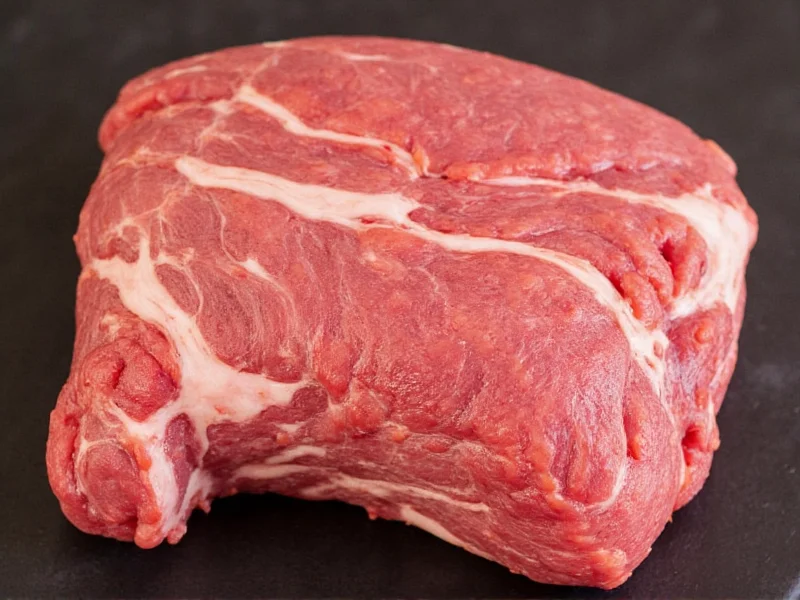Why This Rub Works for Pork Butt
Pork butt, also known as Boston butt or pork shoulder, requires a thoughtful rub approach due to its high fat content and connective tissue. The right dry rub for pork butt serves multiple purposes: it creates a flavorful bark during smoking, enhances moisture retention, and complements the meat's natural richness without overpowering it.
Unlike leaner cuts, pork butt benefits from rubs with balanced sweetness that caramelizes during the long cooking process. The sugar content in your rub for pulled pork should be substantial but not overwhelming—typically comprising 25-30% of the total rub weight. This prevents burning while developing that coveted mahogany-colored crust.
Essential Components of a Quality Pork Butt Rub
A successful rub for pork shoulder seasoning contains four critical elements:
| Component | Purpose | Common Ingredients |
|---|---|---|
| Salt | Moisture retention and flavor enhancement | Kosher salt, sea salt |
| Sugar | Caramelization and bark formation | Brown sugar, white sugar, turbinado |
| Peppers | Heat and complexity | Paprika, black pepper, cayenne |
| Aromatics | Flavor depth and balance | Garlic powder, onion powder, mustard powder |
Detailed Homemade Pork Butt Rub Recipe
This tested pork butt dry rub recipe yields enough for a 6-8 pound cut, the standard size for most smokers:
- 1/3 cup packed brown sugar (light or dark)
- 3 tablespoons paprika (sweet Hungarian preferred)
- 2 tablespoons kosher salt (Diamond Crystal)
- 2 tablespoons freshly ground black pepper
- 1 tablespoon garlic powder
- 1 tablespoon onion powder
- 1 tablespoon chili powder
- 1 teaspoon cayenne pepper (adjust to taste)
- 1 teaspoon dry mustard powder
- 1/2 teaspoon ground cumin
Mix all ingredients thoroughly in a bowl. For best results, prepare this homemade pork butt rub at least 24 hours before cooking to allow flavors to meld. Store in an airtight container away from light and moisture.
Application Techniques for Maximum Flavor
Knowing when to apply rub to pork butt significantly impacts results. Follow these professional techniques:
- Dry the surface: Pat the pork butt completely dry with paper towels before applying your rub for pulled pork. Moisture prevents proper adhesion.
- Season generously: Apply a thick, even layer (about 1/4 inch) across all surfaces, including the fat cap.
- Refrigerate: Place the rubbed pork butt on a wire rack over a baking sheet and refrigerate uncovered for 12-24 hours. This dry brine process enhances flavor penetration.
- Bring to temperature: Remove from refrigerator 1-2 hours before smoking to take the chill off.
The extended resting period allows salt to penetrate deeper into the meat while sugar begins the curing process. This technique transforms your basic pork shoulder seasoning into a complex flavor profile.
Variations for Different Flavor Profiles
Customize your smoke meat rub ingredients based on your preferred taste:
Sweet Carolina Style
Increase brown sugar to 1/2 cup and add 2 tablespoons of honey powder. Reduce cayenne to 1/2 teaspoon. This variation pairs perfectly with vinegar-based mops during smoking.
Texas-Inspired Rub
Reduce sugar to 3 tablespoons, increase black pepper to 1/4 cup, and add 1 tablespoon of coarse ground coffee. This bold blend stands up to long smoking times without becoming cloying.
Caribbean Fusion
Add 1 tablespoon allspice, 2 teaspoons ground ginger, and 1 teaspoon cinnamon to the base recipe. Substitute dark brown sugar for light. This sweet and spicy pork rub complements fruit-based mops.
Cooking Recommendations with Your Rub
After applying your dry rub for pork butt, follow these cooking guidelines:
- Smoking temperature: Maintain 225-250°F (107-121°C) throughout cooking
- Cooking time: Approximately 1.5 hours per pound until internal temperature reaches 195-205°F (90-96°C)
- Wood pairing: Hickory, oak, or pecan complement most pork butt rubs
- Resting: Allow meat to rest for 1-2 hours wrapped in butcher paper or foil before pulling
The rub's sugar content will begin caramelizing around 265°F (129°C), forming the signature bark. Avoid spritzing during the first 4-6 hours to prevent washing away your carefully applied seasoning.
Common Mistakes to Avoid
Even with the best pork butt rub recipe, these errors can ruin your results:
- Using table salt instead of kosher salt: Table salt is denser and can make your rub overly salty
- Applying rub immediately before cooking: Without resting time, flavors won't penetrate properly
- Adding liquid ingredients to dry rub: Creates a paste that burns easily during smoking
- Over-rubbing: Excessive rub creates a bitter, chemical-like flavor as sugar burns
- Skipping the rest period: Essential for both the meat and the rub to reach optimal texture
Storage and Preparation Tips
Prepare your homemade pork butt rub in larger batches for convenience:
- Store in an airtight container away from light and moisture for up to 6 months
- Label containers with preparation date to track freshness
- For extended storage, keep in the freezer where spices retain potency longer
- Always measure ingredients by weight for consistent results across batches
- Refresh older rubs with a small amount of fresh spices before use
When applying your rub for pulled pork, use your hands rather than utensils. The warmth and oils from your skin help activate the spices and create better adhesion to the meat surface.











 浙公网安备
33010002000092号
浙公网安备
33010002000092号 浙B2-20120091-4
浙B2-20120091-4